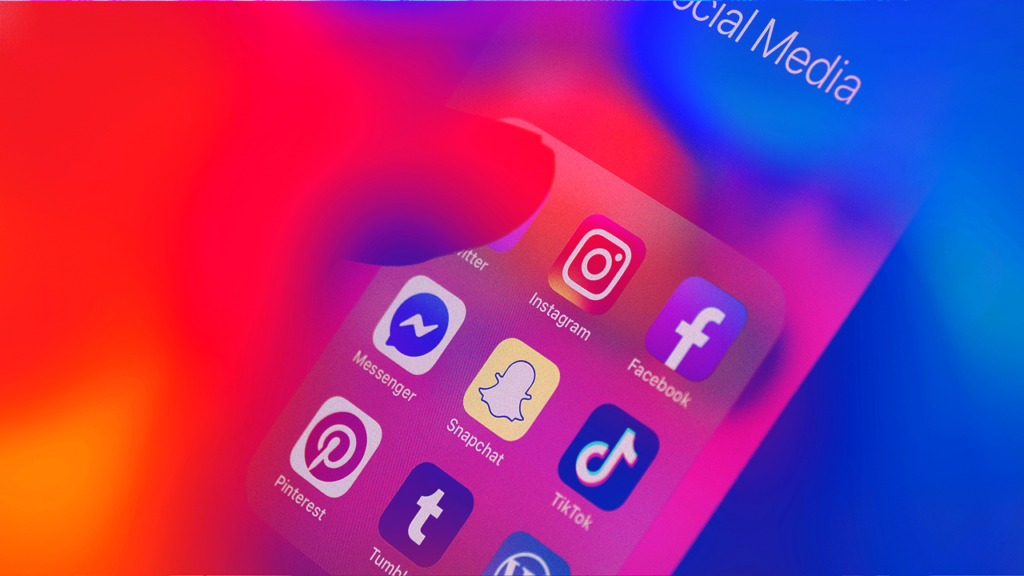This week, Meta announced Music Revenue Sharing, a new monetization option for its Facebook platform designed to lure creators back to its ad ecosystem. In other news, Snap’s gloomy numbers proved that making money consistently from user-generated content is hard for billion-dollar platforms, too.
Meta announced today that it was launching a new program on its Facebook platform that would allow creators to use licensed music in their Facebook videos and earn a share of in-stream ad revenue. Creators using other artists’ music in popular videos is a tender spot for Google’s YouTube, which has faced backlash for its proactive approach to copyright enforcement, such as its removal of Lofi Girl’s livestreams. Removing friction from content monetization for new or less popular creators allows Meta to serve as a talent incubator for “micro” influencers: Those new voices will likely stay with the platform that helps them grow their audience—especially when they do not have to worry about music licensing conflicts and can earn as they build their community.
Why it matters:
Google may own search, but Meta, which also counts Instagram, What’s App, Messenger and Meta the VR platform, among its properties, still owns social. Meta reports that 77% of internet users (3.59 billion people) use at least one Meta platform or app every month. More people have joined Facebook this year, with monthly users standing at 2.91 billion, an increase of 6% over last year. That gives it an edge over YouTube, which has 2.6 billion active monthly users.
The details:
Facebook’s advantage isn’t just in the numbers: It has an arsenal of channels for consumers to create, share and earn from videos shared in their social circles: Instagram, Messenger and WhatsApp, and the ever-evolving Meta platform. Presently, the company claims that over one billion stories are shared each day through its platform networks. If Meta can convince users that they don’t have to leave the Meta-verse to easily monetize their niche videos by allowing them to benefit from Facebook’s powerful search tools to tag their content along with popular music titles, they may be able to gain an enduring advantage over YouTube, which cannot replicate Meta’s ability to integrate its community features with new video monetization possibilities.
Nonetheless, YouTube viewers spend an average of 18 minutes watching videos on the platform. While Facebook users spend an average of 33 minutes on the site, their engagement time is divided between social interactions and content consumption. YouTube’s status as the premier social video platform is not going away anytime soon, and its legacy as the home of the original video influencers like Markiplier means that it can mine its own universe of megawatt talent to create new branded content viewing opportunities for users. Because viewers go to YouTube specifically to watch videos, not chitchat with grandma or send snark to their high school nemesis, it offers brands an opportunity to deliver content designed for deep, un-distracted engagement.
Big Picture: Snap makes it clear it knows what it is doing
Matt McGowan, country leader for Snap Canada, posted this on his personal LinkedIn page regarding the company’s recent numbers:
“We all know Q2 2022 was a challenging quarter. Given this tough operating environment, I must say I am nothing but proud to (1) work alongside such a strong, transparent and thoughtful team like Team Snap Inc. and (2) to be able to share the following strong growth story
- User Growth: We saw strong 18% year-over-year daily active user (DAU) growth.
- AR: We continue our leadership in augmented reality, as over 250 million Snapchatters engage with AR every day.
- Content: In Q2, overall time spent watching content globally grew year-over-year, driven primarily by growth in total time spent with content on Discover and Spotlight.
- Discover: More than 40 Discover channels reached over 25 million global viewers each.
- Spotlight: Total time spent watching Spotlight content grew 59% year-over-year. Spotlight monthly active users (MAU) grew 46% year-over-year to reach more than 270 million in Q2.
- Content & Age 25+: The daily average number of Snapchatters aged 25 and older engaging with shows and publisher content increased by more than 40% year-over-year.
- Snap Map: Engagement with our Map continues to grow, with over 300 million Snapchatters engaging with the Map each month.
- Revenue: Global revenue grew 13% year-over-year to $1.11 billion.”
While McGowan’s full-throated defense may seem a bit generous to the company, ad revenues are down for other big names too, not just Snap. Brands and investors are juggling worries about the global economy with the need to engage audiences, and that puts newer kids on the block like Snap on the defensive, even when their overall user numbers are up along with user engagement rates. Meta and Alphabet (owner of Google) and other companies dependent on ad revenue lost around $80bn in combined stock market value on Thursday, per The Guardian. While investors remain skittish, brands still have to put their ad dollars somewhere. That means platforms that can prove their worth to users and advertisers have a chance to gain market share.
Bottom line:
Meta, Google and Snap are fighting for the same prize: Users’ engagement and advertisers’ trust. As advertisers become warier of where their ad dollars are going, they will likely have less tolerance for monetization tools that are not user-friendly, clunky UI’s that distract users from content, or business models that impede creators’ ability to draw eyes to their content. That means platforms must provide advertisers with creative ways to not only get and keep audiences engaged but also ensure that fan-favorite creators—like Lofi Girl and others—stay happy and online.

